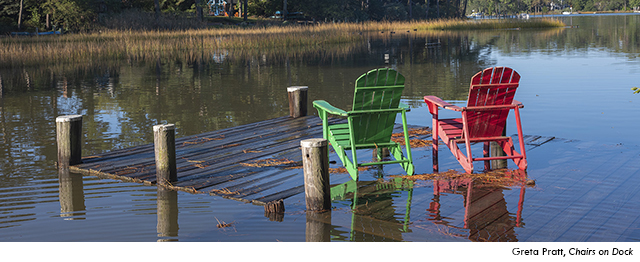Old Dominion University researcher George McLeod created lenticular prints––specially designed graphics in which multiple images are interlaced to generate a sense of movement or change––to simulate the potential impacts of climate change and sea-level rise in Hampton Roads. In each panel, many images work in harmony to portray the progression of tidal and moderate storm flooding from present day to 2080. As you move from left to right, vulnerable buildings, streets, and neighborhoods increasingly succumb to the effects of sea-level rise, storm surge, and coastal flooding.
McLeod’s lenticular maps show us that change is imminent, as they visualize the potential depth and extent of inundation in local flood-prone areas. The mapping does not incorporate future changes in coastal topography, development, or new flood-prevention infrastructure, but rather assumes that present conditions will persist. Data gathered by Old Dominion University’s Center for Geospatial Science, Education, and Analytics are put into motion, helping us to understand the growing hazards associated with sea-level rise and climate change.
Maps
Coastal Virginia Sea Level with Minor and Moderate Flooding, George M. McLeod
Map Overview Layout, with Key, George McLeod
Three-Panel Map, Lenticular Print, Version 1, George McLeod
Three-Panel Map, Lenticular Print, Version 2, George McLeod
News Articles
ODU Researchers' Future Flood Maps Inform Virginia's Coastal Resilience Master Planning Process, News @ ODU
Reports
Coastal Flooding: How Coastal Communities Are Being Impacted By Sea Level Rise and the Data that Can Help, National Oceanic and Atmospheric Administration/National Ocean Service, Old Dominion University, and ESRI
Virginia Coastal Resilience Master Plan, Virginia Department of Conservation and Recreation

